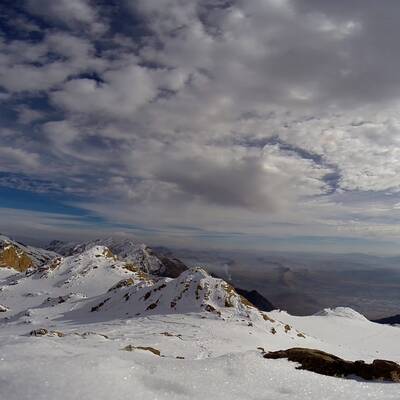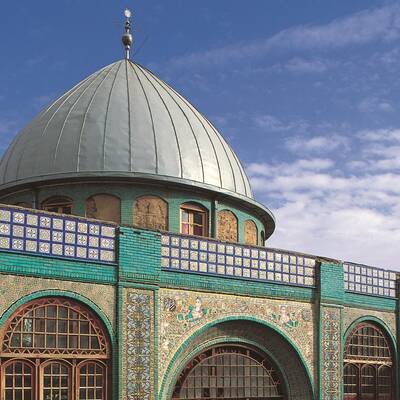With a population of a million and nine hundred thousand people (according to the 1395 census), Kermanshah province is the ninth most populous province in the country. Various languages and dialects such as Kermanshahi Persian, Kurdish, Kalhor, Jafi, Sorani, Uramani, etc. are commonly spoken in the province.
As one of the important settlements of the Medes, this province was located on significant communication routes such as the Silk Road. During the Sassanid period, it was also one of the important centers of government and that is why many relics have remained from this period. They include Taq Bostan, Bisotun inscription, Anahita temple, etc. During the First World War, it was also occupied by the Ottoman government for a while and then by the Allies, and finally after the country divisions, Kermanshah province has now fourteen cities: Eslam Abad-e Gharb, Paveh, Thalat Babajani, Javanrud, Dalahu, Ravansar, Sar Pol-e Zahab, Sonqor, Sahneh, Qasr-e Shirin, Kermanshah, Kangavar, Gilangharb and Harsin.
Geography
Kermanshah reaches Kurdistan province to the north, Lorestan province from the south, and Hamedan province to the east. Also, as one of the border provinces, Kermanshah province is bordered by Iraq to the west.
This province is located on the northwestern slopes of the Zagros Mountain Range, and the presence of mountainous texture and high plains between the mountains has created a diverse vegetation cover in this province.
Climate
Kermanshah is one of the mountainous provinces in the country located between the Iranian plateau and the Mesopotamian plain. Among the different cities of Kermanshah province, Qasr-e Shirin has a warmer climate and cities such as Sonqor and Paveh are cold with mountainous climate. Therefore, the best time to travel to this province in terms of weather conditions is spring and summer.
Kermanshah city
Kermanshah city, which is the center of Kermanshah province, is considered one of the historical and cultural cities in Iran. The city with a population of over 947,000 (according to the 1395 census) is the most populous Kurdish city in Iran.
Kermanshah, which was formerly known as "Bakhtaran", embracess lots of historical monuments. Taq Bostan, Bisotun inscription, Shafei Mosque, Moaven al-Molk Tekyeh and Biglarbeigi Tekyeh are among the historical and tourist attractions of Kermanshah. Also, Kermanshah Flower Garden, which is considered the second largest flower garden in Iran (after Isfahan Flower Garden), is one of the tourist monuments in the city.
Islam Abad-e Gharb
Islam Abad-e Gharb is another city in Kermanshah province, known as the capital of Iran's oak forests. Most of the people here speak Kurdish and Kalhor Kurdish.
Paveh
Paveh is a city in the north of Kermanshah province located next to the Shaho mountain range. Most of the inhabitants in this city speak the Hawrami dialect.
While some believe that the word Paveh in the Hawrami dialect means stable and permanent, others attribute this name to the Sassanid general Yazdgerd III, who traveled to the city in order to gain the support of the Kurdish tribes and was respected by the people.
Qori Qaleh Cave, Hajij Village, Vimir Resort and Sarab Ravansar are among the sights around Paveh city. The stepped structure of Paveh is another attraction in this city.
Sarpol-e Zahab
Sarpol-e Zahab is a border city in Kermanshah province, located 144 kilometers west of Kermanshah. The "Anubani-ni" inscription, which is one of the oldest inscriptions in the world and is considered the first architectural art on rock in Asia, is located in this city. An inscription that is said to have inspired the Bisotun inscription two thousand years later.
The main occupation of the people in this city is agriculture and animal husbandry. Wheat, barley, rice, legumes and sesame are among the agricultural products of this city.
Accommodations
There are many options for accommodations in Kermanshah. Laleh Bisotun International Hotel is an old caravanserai with a 300-year-old building and traditional architecture that will catch your eye. This hotel is located 30 kilometers away from Kermanshah city at the foot of the amazing Bisotun wall. Parsian Hotel is another option that is very suitable for business meetings due to its good facilities and proximity to Kermanshah Airport. Jamshid Hotel is another accommodation in Kermanshah that is close to Qori Qaleh Cave.
Also, Aram Hotel in Paveh, Imam Reza (AS) Hotel in Qasr-e Shirin and Kurd Hotel in Saqqez are suitable for those who want to visit different cities in this province.
Satiar, He-Naz, Dariyan Setareh Gharb and Negin-e Hooraman ecotourism accommodations in Paveh, Nature School and Keykom Eco Ledge in Kermanshah, Zaran and Artin Dinavar Eco Ledges in Sahneh and finally Sabat Kani Kechkineh in Ravansar are other accommodation options in different cities of the province.
Restaurants
If you have traveled to this province in order to try local Kermanshahi foods such as Dandeh Kabab and Khoresh-e Khalal, restaurants such as Heidari in Taq Bostan, Chelcheleh Restaurant in Bargh Street and Shaili International Restaurant in Rafatiyeh are good choices. You can also try Abbasali Aush at Timche Restaurant in Javanshir Square.
Local foods
Kermanshah has a long list of local foods. At the top of this list place Dandeh Kabab, which is cooked with lamb ribs, onion, garlic, black pepper, sumac, tomato paste, lemon, and parsley.
Khoresh Khalal is also one of the cuisines in this province, which is definitely seen on the host's table in formal and official ceremonies. This Kermanshahi stew is prepared with lamb, almond slices, black barberry and saffron.
Abbasali Aush should not be forgotten either. A perfect nutritious meal that is prepared with bone broth and beef sirloin.
Handicrafts
The handicrafts of Kermanshah city include Gilim weaving, Giveh weaving, Jajim weaving and making traditional musical instruments. Seven-color tile, mosaic, sculpture and stone carving are all handicrafts of Islam Abad-e Gharb. Dalaho city is also famous for knife making, metalworking and making musical instruments such as Tanbur and Setar. In Paveh, fabric weaving, textile and basket weaving are also popular.
Souvenirs
Perhaps it can be said that the most famous souvenir of Kermanshah is its sweets.
Rice bread, which is prepared in two types of plain and saffron, kaak, date bread and Kermanshahi ghee, along with Gilim and Jajim, complete the souvenirs of this region.
Customs and Traditions
One of the customs and traditions of Kermanshah province is the Nowruz celebration, which is very important to the people. House cleaning, fire making, setting the Haft Sin table, and baking local sweets with the aroma and taste of Kermanshahi oil to place on the Haft Sin table are all customs of the people in Kermanshah in order to welcome spring.
Visiting the new bride with the title of "No Eid" is another custom of the people of Kermanshah. On the first day of spring, the groom's family prepares a gift for their new bride, who is engaged, they go to the house of bride's parents to congratulate them on the New Year.

